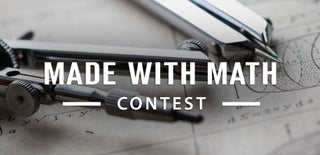Introduction: Antique Drawing Instrument : Gray's Elliptograph
Gray's Elliptograph
The design of mechanical devices to draw ellipses is a rich field for inventors. One of the oldest was devised by Archimedes in the form of a trammel with links sliding in two orthogonal tracks. Since then, ever more complex contraptions have appeared in the patent literature. The “Elliptograph” device described here was first described by F.J.Gray in 1902 (1), and it also appeared in an article by E.M.Love in 1921 (2).
An investigation of the operation of this device brought to light the fact that it does not draw “perfectly formed ellipses” as author Love claims, but instead draws egg-shaped ovals which have one end slightly narrower than a true ellipse. Despite this, I decided to build one of these instruments.
(1) F.J. Gray. Elliptographs, and the application of elliptical curves. Journal of the Society of Arts, pages 143–153, 1902.
(2) Edwin.M.Love, Popular Mechanics, Vol 36, No.3 p. 455 (1921)
Supplies
20 mm x 8 mm DAR timber
Assorted 3 mm screws & hardware
Step 1: CONSTRUCTION
The instrument was constructed from 20 mm x 8 mm DAR pine timber. The components are illustrated in the Dimension Drawing above, and the assembly in the next image.
Assorted 3 mm screws & hardware were used to connect the parts. A spacer needs to be included under the pivot axle to allow the screw joining the drive arm E and the connector F to pass under the main beam A.
The self-tapping screws in the end of the beam legs D were adjusted to align exactly with the metal point G, so that the instrument will sit flat on the drawing surface.
The knife edge K was constructed from a section of copper bar stock filed to make a sharp edge.
All of the sliding tracks were lubricated with graphite powder ( pencil lead scrapings ) to prevent sticking.
To use the instrument, first draw a horizontal straight line and locate the metal point G and knife edge K on the line. Press down on the main beam to stop it slipping and turn the crank arm B anticlockwise for one revolution.
The size and eccentricity of the figure drawn can be adjusted by moving the pencil position along the connecting arm F, and adjusting the linkage point on the drive arm E.
Step 2: MATHEMATICS
The first image shows the mathematics behind the device and the locus of the pen P as the drive arm is rotated through a full circle.
The deviation of the pen track from a true ellipse is illustrated in the next image.
The third image shows some results obtained by varying the distance of the pen P from the drive arm attachment point.

Participated in the
Made with Math Contest













